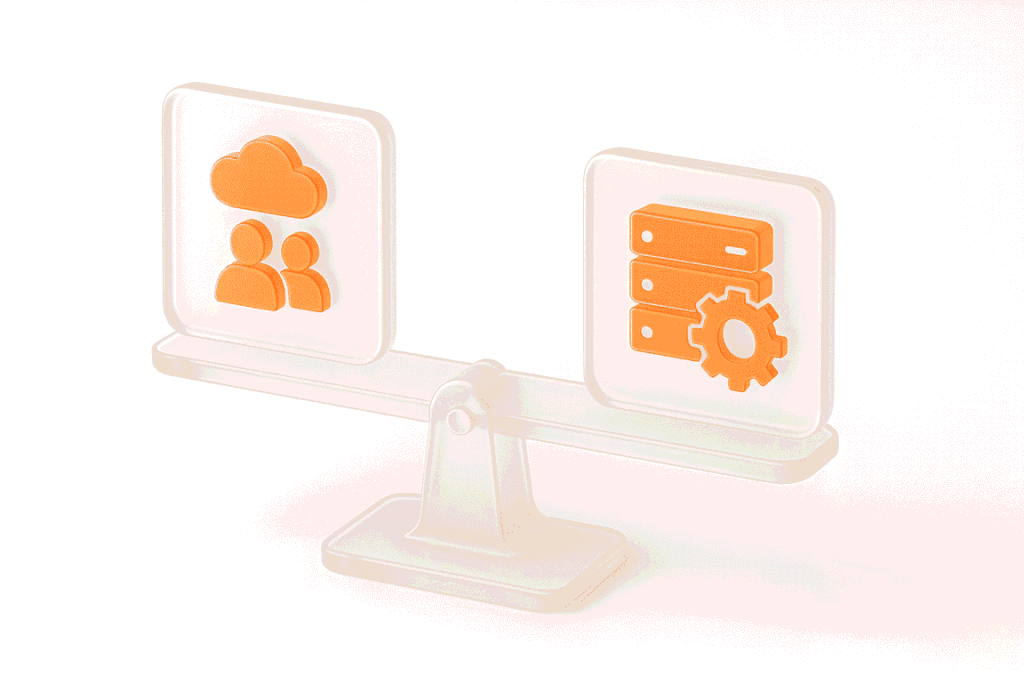K6 is a lightweight tool designed for developers using JavaScript. It’s easy to write simple test scenarios, especially for microservices or static websites. K6’s low resource usage and free version with limited features make it attractive for quick, small-scale testing.
However, for more complex scenarios—such as distributed testing or advanced data pool management—K6 falls short. Users may need to write custom code and integrate external tools. Larger tests can lead to memory leaks and issues when converting JavaScript code to Go. K6 is also shifting toward browser-level testing and doesn’t offer comprehensive support for all protocols by default. For teams evaluating broader testing capabilities, exploring the best load testing tools for API can offer insight into solutions better suited for high-scale and protocol-diverse performance environments. Moreover, K6’s reliance on an Everything as Code mindset can be a barrier to adoption for some QA teams.
There are numerous K6 performance testing alternatives, we will consider several in this material. You can also read more about K6 vs JMeter.
1. PFLB
PFLB is a professional load testing tool for performance engineers. It simulates real-world traffic to ensure web applications handle heavy loads. It integrates with Google Analytics for realistic traffic patterns and features an intuitive web UI, making it ideal for performance testers, SREs, and DevOps.
Key Features
Unique Advantages
With its advanced AI features, PFLB simplifies creating, running, and managing tests, making it a standout choice for modern performance testing. The no-code builder, scalable REST API performance testing capabilities, and seamless JMeter integration make it accessible for all teams.
Comparison with K6
In contrast to PFLB, K6 requires coding and focuses on developer workflows. In addition to its key features, PFLB offers JMeter Cloud Load Testing, and Load and Performance Testing Services.
Key Takeaways
PFLB is a top choice for teams looking to simulate real-world traffic and identify performance bottlenecks. Its easy setup, AI insights, and detailed reporting make it ideal for performance testing at scale.
For teams handling sensitive data during testing, be sure to explore PFLB’s Data Masking Tool — it helps you stay compliant and secure while ensuring realistic test environments.
2. Apache JMeter
Apache JMeter is a much-loved, open-source load testing tool known for its versatility and broad protocol support. It’s widely used for performance testing of web applications, offering a rich feature set that includes extensive plugin support. In contrast to other alternatives to K6, it’s been around for over 25 years and remains a go-to tool for many testers. However, it does have some limitations, such as resource efficiency and UI design.
Key Features
Unique Advantages
JMeter’s long history and extensive community of admirers make it the first choice for traditional testing teams. Its protocol flexibility and ability to handle complex user flows with ease are standout features. A large amount of tutorials and resources make it an ideal tool for beginners and experienced testers alike.
Comparison with K6
K6 is developer-oriented and focused on code-based testing. JMeter has broader protocol support, including legacy protocols, but lacks modern performance analysis tools. K6, on the other hand, is lighter, integrates well with CI/CD pipelines, and is more resource-efficient at scale.
Key Takeaways
JMeter is a robust, open-source tool suitable for teams looking for comprehensive protocol support and detailed test scripting. Since it does not have native cloud capabilities, consider a platform that allows to use JMeter with a cloud. K6 has a Cloud K6 extension that enhances the local version by providing a hosted platform for large-scale and distributed load testing.
3. Locust
Locust is an open-source load testing tool that uses Python to define user behavior. It’s flexible, easy to use for Python developers, and can be adapted for testing a wide range of systems and protocols. Though originally designed for web applications, Locust can be adapted for testing virtually any system or protocol by writing custom clients. While it’s less popular than tools like JMeter, it can be the best choice for smaller, Python-focused teams with simpler load testing needs.
Key Features
Unique Advantages
Offers a clear, script-based approach to load testing. Its flexibility allows it to be extended beyond typical web applications, making it adaptable for a variety of systems. Unlike many other tools, Locust doesn’t require complex setup for small projects, and its Python foundation makes it very approachable for those familiar with the language.
Comparison with K6
While K6 is also developer-focused, Locust gives more flexibility for those already working in Python environments. K6 is better suited for modern, cloud-native testing with more protocol support and an easier setup for large-scale tests, while Locust is more focused on smaller, less complex testing scenarios with a simpler setup process.
Key Takeaways
Locust is a great tool for small teams familiar with Python who need a simple, customizable load testing solution. It’s easy to use for basic testing but may struggle with more complex scenarios, particularly when it comes to distributed testing or CPU-intensive tasks.
4. Gatling
Originally Scala-based, it has expanded to support Java and Kotlin, making it accessible to a wider audience. It’s designed for teams that embrace the Everything as Code philosophy, offering great flexibility but with some paid features. While powerful for high RPS testing, some teams may want to explore alternative tools to Gatling if they need less complex setup or different language support. Gatling is ideal for users who want to write custom test scripts and need efficient resource usage for high RPS testing.
Key Features
Unique Advantages
Gatling’s flexibility in custom coding makes it a powerful tool for developers. Unlike other tools, it allows deeper customization, integrating Java libraries to enhance tests.
Comparison with K6
Gatling is more developer-centric and requires coding in Scala (or Java/Kotlin). Its free version has fewer features compared to K6, such as no distributed testing or external metric reporting without a paid plan. K6, on the other hand, is lighter and integrates well into CI/CD pipelines.
Key Takeaways
Gatling is for developers who want deep control over their performance tests and need to handle high traffic. However, its reliance on coding and the limitations of the free version might be a challenge for some. It’s best suited for teams that are comfortable with coding and need custom solutions.
5. BlazeMeter
BlazeMeter is a cloud-based performance testing platform that works with popular open-source tools like JMeter, Gatling, and Locust. It offers a no-code test builder suitable for novices, provides hosted load generators, and integrates with various monitoring tools to track performance.
Key Features
Unique Advantages
BlazeMeter is great for teams using multiple testing tools and running tests at scale. Its mobile testing feature and global server support make it ideal for large applications. The integration with monitoring tools gives you detailed insights into your system’s performance.
Comparison with K6
BlazeMeter is more comprehensive, supporting a wider range of tools and protocols. It’s great for big teams with complex needs. K6 is simpler and more focused on integration with CI/CD pipelines, making it a better choice for smaller teams or projects with fewer testing needs. Find out more about Blazemeter alternatives.
Key Takeaways
BlazeMeter is a solid choice for large teams that need to test applications at scale and across multiple protocols. It’s packed with features but may be overkill for smaller teams or simpler tests.
6. LoadNinja
LoadNinja is a cloud performance testing platform designed for browser-based testing of websites and web applications. Its AI features and an intuitive record-and-playback system reduce the time needed to create test scripts.
Key Features
Unique Advantages
LoadNinja stands out for its use of real browsers, offering a more realistic testing environment. Its AI capabilities reduce the need for manual work, and the simple record-and-playback feature makes creating tests easier than with many other tools. This allows teams to quickly identify performance bottlenecks without complex setup.
Comparison with K6
Unlike K6, which is focused on load testing with scripts and APIs, LoadNinja focuses on browser-based performance testing. K6 is more developer-friendly and better suited for API testing, while LoadNinja is designed for teams that need to test the end-user experience on websites with real browsers.
Key Takeaways
LoadNinja is meant primarily for testing web applications in a browser environment. Its AI features and easy-to-use interface make it suitable for both beginners and experienced testers. However, it’s not ideal for teams needing private cloud support or testing scenarios outside of browser-based load testing.
Final thoughts
Choose the right load testing tool based on your team’s needs and skills. While K6 is lightweight and great for developers, it has limits when it comes to protocol support and handling more complex scenarios. Similar to finding the best LoadRunner alternatives for enterprise environments, selecting the right K6 alternative depends on your specific requirements. Tools like PFLB, JMeter, BlazeMeter, Gatling, Locust, and LoadNinja each bring something unique to the table:
The best tool for you depends on what you’re testing and the features you need. These K6 alternatives offer a range of options to help you pick the right one for your project.





